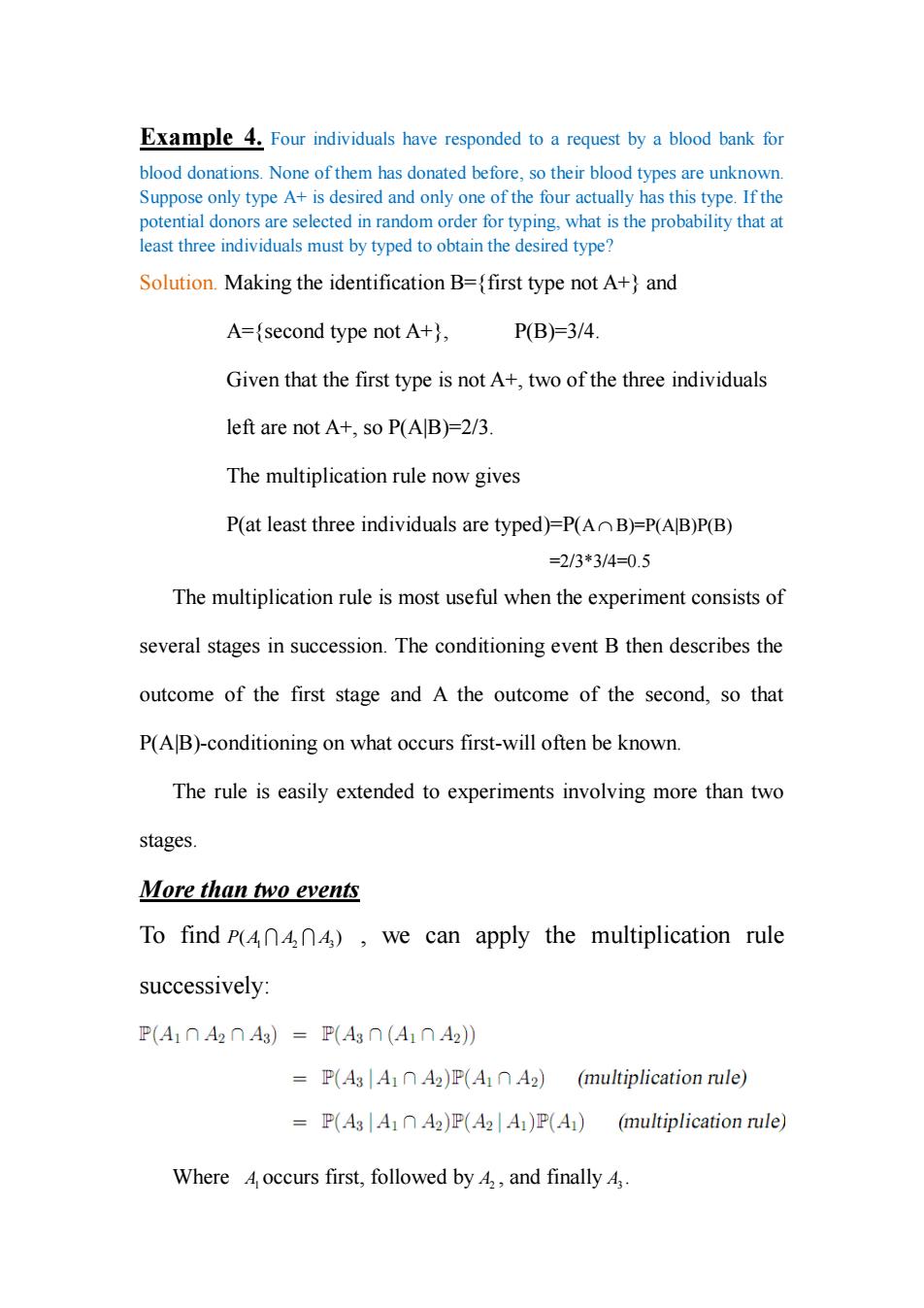正在加载图片...

Example 4.Four individuals have responded to a request by a blood bank for blood donations.None of them has donated before,so their blood types are unknown Suppose only type A+is desired and only one of the four actually has this type.If the potential donors are selected in random order for typing,what is the probability that at least three individuals must by typed to obtain the desired type? Solution.Making the identification B=(first type not A+)and A={second type not A+),P(B)=3/4. Given that the first type is not A+,two of the three individuals left are not A+,so P(AB)=2/3 The multiplication rule now gives P(at least three individuals are typed)=P(AB)=P(AB)P(B) =2/3*3/4-0.5 The multiplication rule is most useful when the experiment consists of several stages in succession.The conditioning event B then describes the outcome of the first stage and A the outcome of the second,so that P(A|B)-conditioning on what occurs first-will often be known. The rule is easily extended to experiments involving more than two stages. More than two events To find P(),we can apply the multiplication rule successively: P(A10A20A3)=P(A3n(A042)) =P(A3|AA2)P(A1A2)(multiplication rule) =P(A3|A A2)P(A2 A)P(A1)(multiplication rule) Where 4 occurs first,followed by 4,and finally 4.. Example 4. Four individuals have responded to a request by a blood bank for blood donations. None of them has donated before, so their blood types are unknown. Suppose only type A+ is desired and only one of the four actually has this type. If the potential donors are selected in random order for typing, what is the probability that at least three individuals must by typed to obtain the desired type? Solution. Making the identification B={first type not A+} and A={second type not A+}, P(B)=3/4. Given that the first type is not A+, two of the three individuals left are not A+, so P(A|B)=2/3. The multiplication rule now gives P(at least three individuals are typed)=P(A B)=P(A|B)P(B) =2/3*3/4=0.5 The multiplication rule is most useful when the experiment consists of several stages in succession. The conditioning event B then describes the outcome of the first stage and A the outcome of the second, so that P(A|B)-conditioning on what occurs first-will often be known. The rule is easily extended to experiments involving more than two stages. More than two events To find 1 2 3 P A A A ( ) , we can apply the multiplication rule successively: Where A1 occurs first, followed by A2 , and finally A3